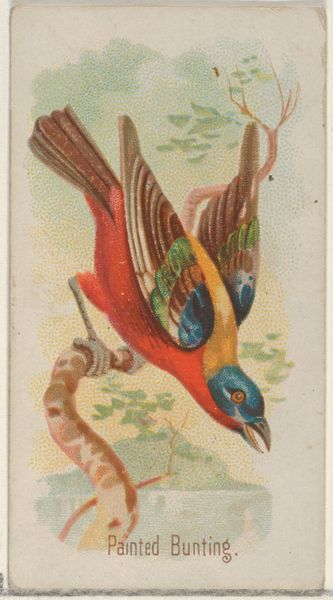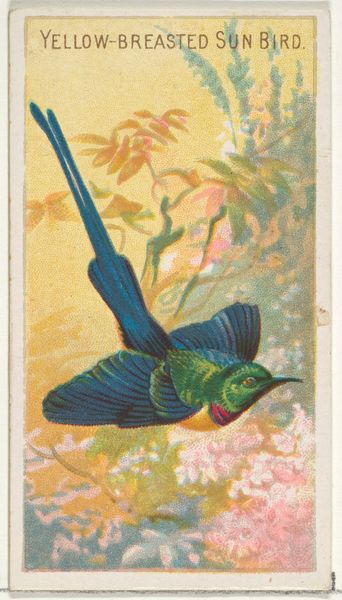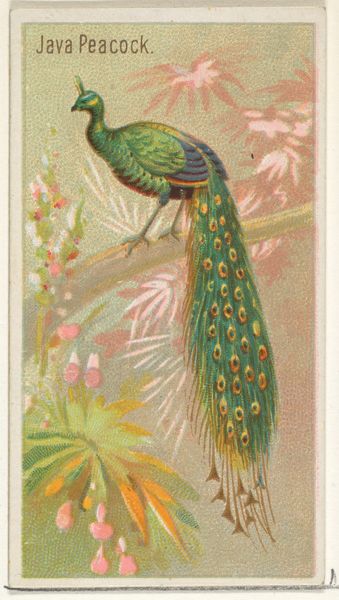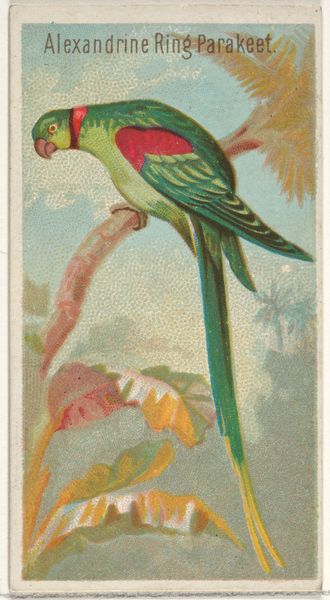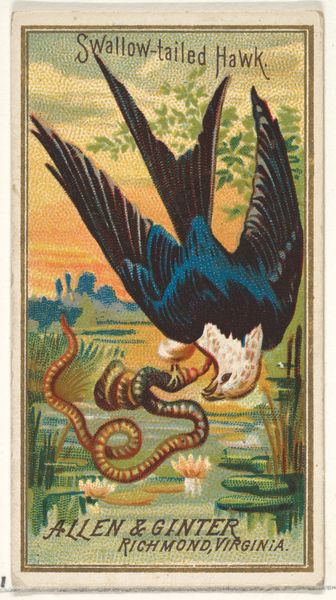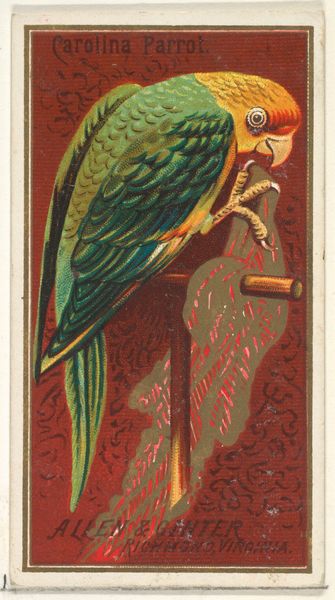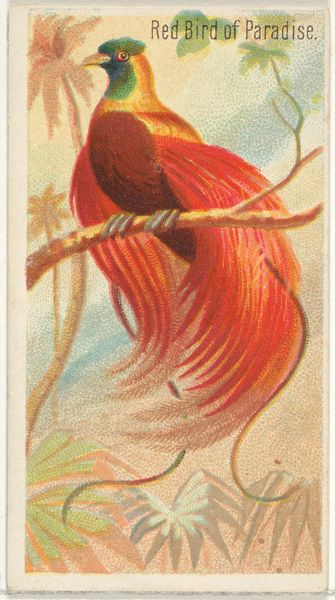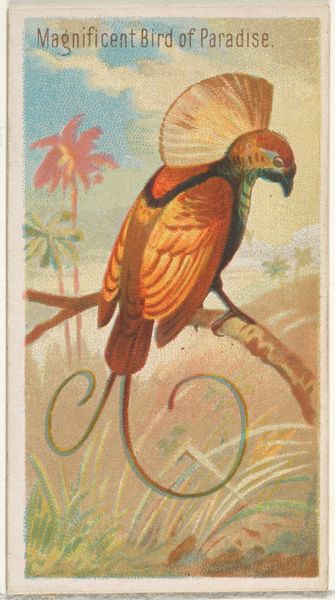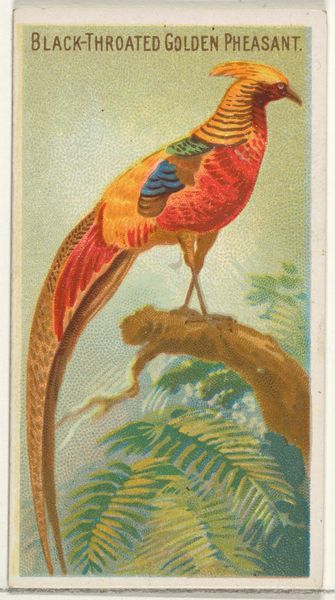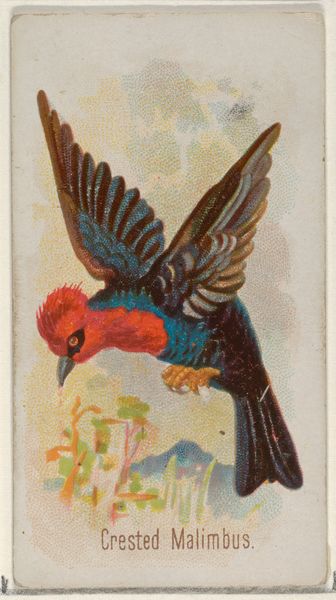
Quetzal, from the Birds of the Tropics series (N5) for Allen & Ginter Cigarettes Brands 1889
0:00
0:00
drawing, print
#
portrait
#
drawing
#
art-nouveau
# print
#
naive art
#
art nouveau
#
watercolor
Dimensions: Sheet: 2 3/4 x 1 1/2 in. (7 x 3.8 cm)
Copyright: Public Domain
Curator: This is "Quetzal," from the Birds of the Tropics series, created around 1889 for Allen & Ginter cigarette brands. The print now resides at the Metropolitan Museum of Art. Editor: It's remarkably vivid. The colors, the bold outline, it feels very immediate. Almost naive in its representation, yet the composition, the careful arrangement of elements—it suggests something more sophisticated is at play. Curator: These were trade cards. Small, mass-produced objects, meant to be collected. The Quetzal itself is a potent symbol, especially in Central American cultures. Its feathers were historically used in headdresses by royalty and priests. Think about the cultural appropriation inherent in branding cigarettes with such a culturally loaded image. Editor: Right. Semiotically speaking, we're dealing with a series of signs detached from their original context and re-coded for a specific consumer purpose. Look at how the flowing tail feathers are almost stylized into a decorative flourish; pure Art Nouveau. The flatness, too; everything contributes to a two-dimensional design prioritising the aesthetic over accurate depiction. Curator: Precisely. The very act of extracting this sacred bird from its natural environment and turning it into a token of commercial exchange reflects a deep imbalance of power. We can consider how these images circulate, reinforce stereotypes, and contribute to a legacy of colonialism. The seemingly innocent image participates in a broader socio-political structure. Editor: Though, there’s a certain formal charm to the bird's iconic rendering and use of bold primary colors. I admire how it is simultaneously an observation of nature and a stylistic abstraction. Curator: I see how you could be drawn in. However, for me, that appreciation must be tempered with the awareness of how it’s enmeshed in complex systems of representation and cultural exchange. Editor: Indeed. This work really showcases the necessity to consider both historical and material conditions of artwork when trying to unravel layers of meaning and affect.
Comments
No comments
Be the first to comment and join the conversation on the ultimate creative platform.

